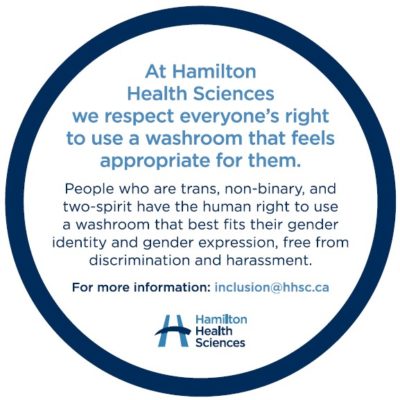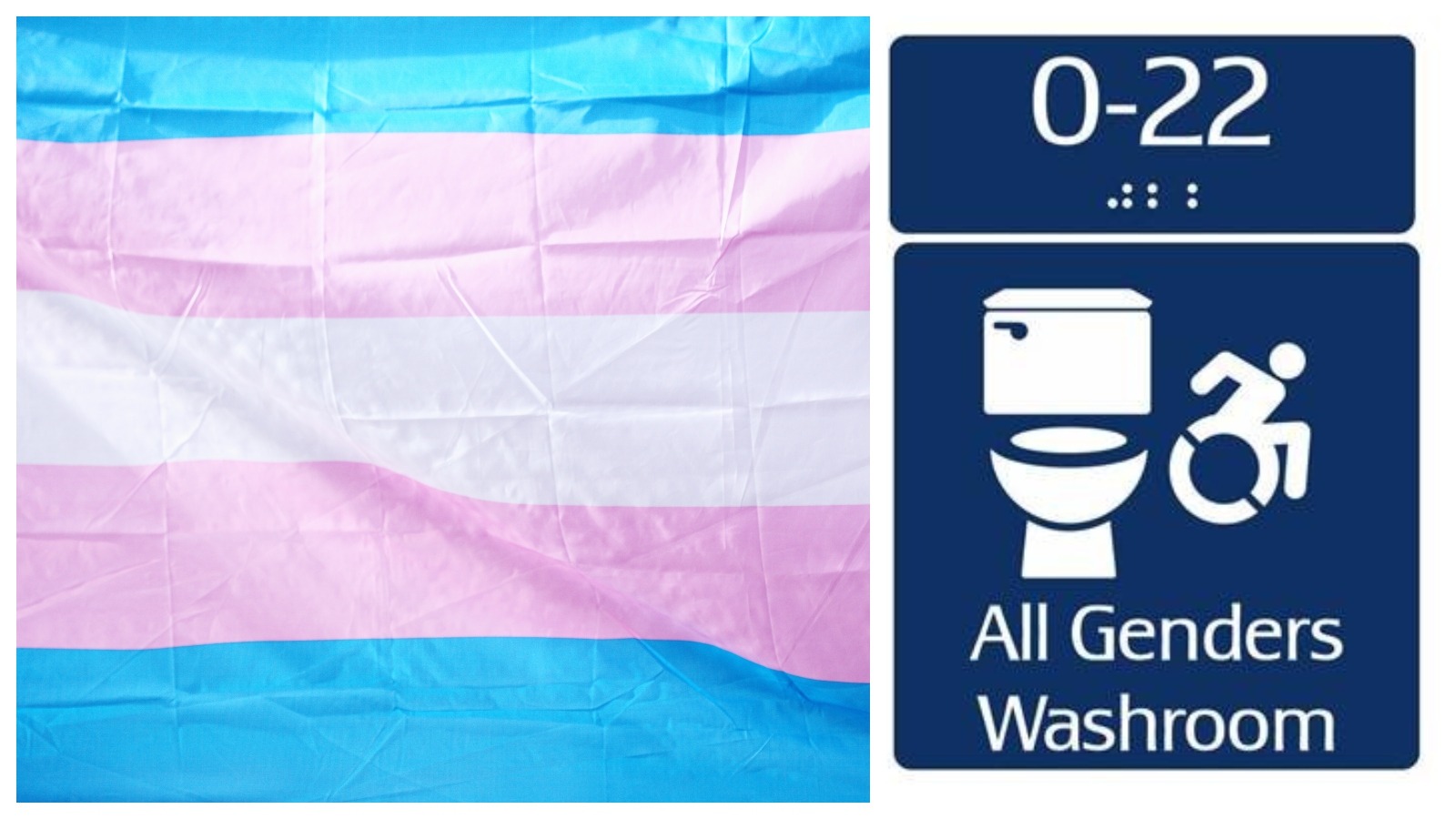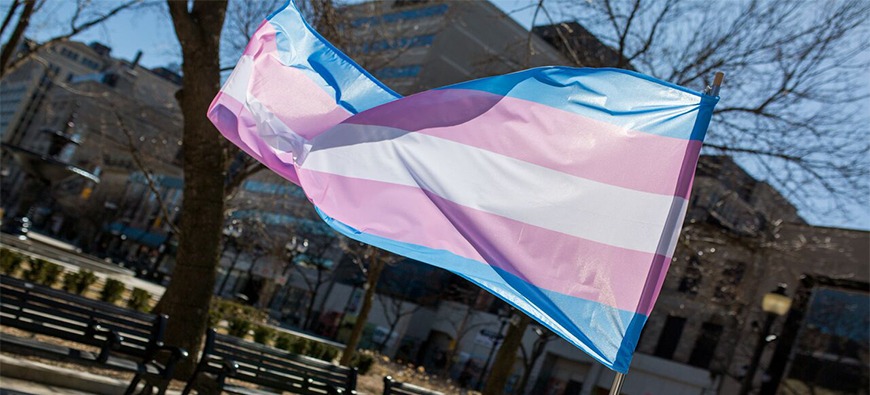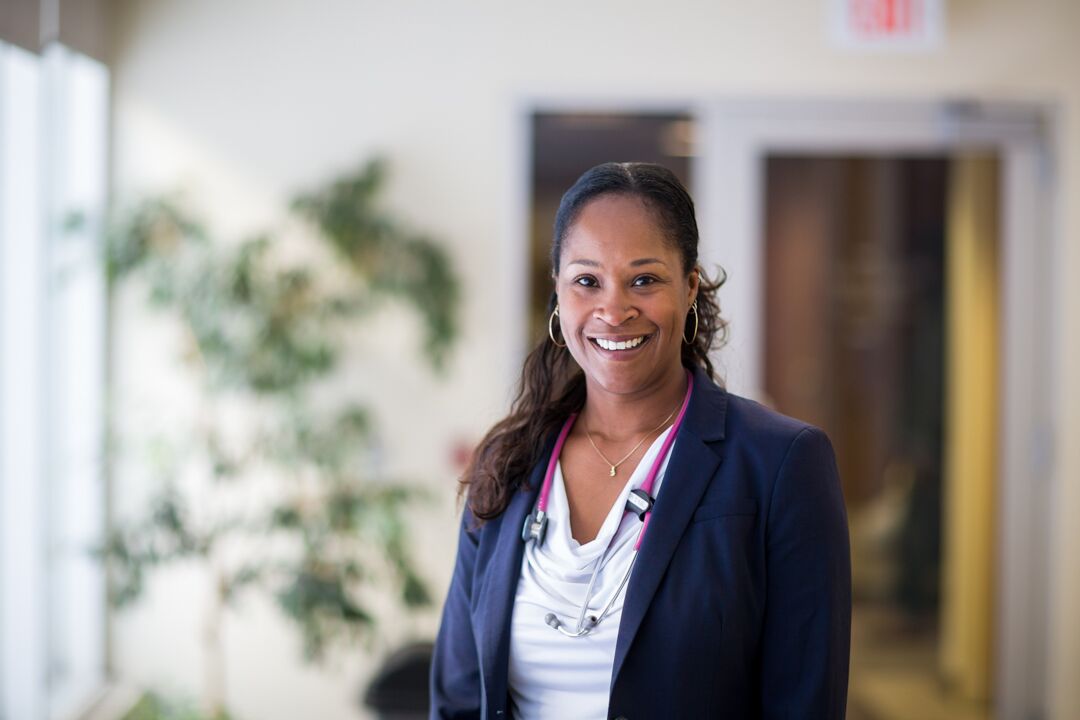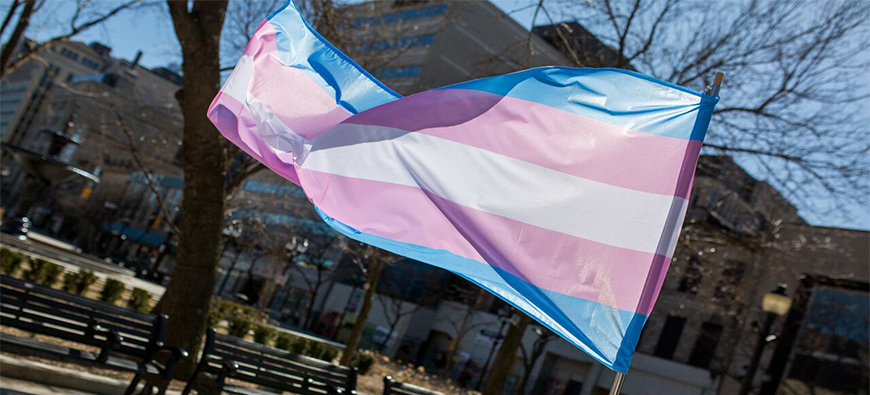
Moving towards trans-inclusive health care
This post was originally published in March 2018 and has been updated.*
Visiting the doctor can be stressful for anyone, but for people who are trans and gender-diverse, it can be traumatizing.
Trans and gender diverse individuals often experience discrimination and violence because of their gender identity and gender expression. It’s also common for trans and gender-diverse people to avoid or postpone seeking medical attention for fear of the experience they’ll encounter in a health care setting.
A 2015 survey by the Trans PULSE Project to inform Human Rights Policy found that one in ten trans people who accessed an emergency room had been refused care or had care terminated prematurely, because they were trans. One-quarter reported being belittled or made fun of by an emergency care provider for being trans. On top of that, 21 per cent of trans people said they had avoided the emergency department when they needed it because of discrimination. Among those with a family doctor, about 40 per cent said they had experienced discriminatory behavior from a family doctor at least once. There are a number of aspects during a visit with healthcare staff and clinicians that can be challenging and even traumatic for trans people.
Trans Health: Identification and Systems
Only 30 per cent of trans Ontarians who have socially transitioned and changed their legal names, have also changed their federal and provincial identity documents, according to the Trans PULSE Project. This is often because the process of changing government issued ID is difficult, lengthy and expensive.
Health cards include a person’s legal name and the gender assigned at birth, embedded within the card with an M or F marker. Not all trans and gender-diverse people have disclosed their gender identity to their family, or may not have the financial resources to change their documents. In these cases, their legal name and the gender embedded within their health card does not align with their gender identity, gender expression, and name that they go by.
A person’s gender is one of three identifiers used by OHIP for billing purposes, so it has to be entered into a patient’s electronic medical record at the hospital. In our current software, Meditech, there is no formal process for recording a different name and gender in the system. In some cases, this results in patients being called into their appointment by their legal name, or being referred to by the gender assigned at birth, because documents are not updated. These health care experiences can be embarrassing and traumatic to trans and gender-diverse patients, and result in them leaving the appointment and delaying future care.
The new hospital information system we are implementing will provide significant opportunities to improve care for folks who are Two-Spirit, Trans, gender non-binary, and gender non-confirming with more inclusive options for documenting identity.
“Recognizing the person as a whole is at the heart of the development of patient-centered care. For many LGBTQ2S+ people, accessing care that validates their identities can be difficult,” says Alyssa Marfisi and Brett Pluim, part of the team working on the implementation of our new hospital information system.
“We are excited that with this new electronic health record, we will be able to improve care for LGBTQ2S+ people through new features including: opportunities to record preferred names and pronouns that follow patients through every encounter, a more diverse range of gender and sexual identity options, and a more comprehensive referral process.”
At Hamilton Health Sciences (HHS), some clinics have developed alternate strategies for ensuring the correct name, gender identity, and pronouns are used. For example, the Child and Youth Mental Health Program at McMaster Children’s Hospital has created an interim process by asking all individuals what name, gender identity and pronouns they identify with as a standard practice on their forms. If their name, gender, and pronouns differ from what is noted in the system or their legal documents, it is documented on paper and passed to their next point of contact. This way, when providers communicate with patients, they can refer to them correctly and maintain the patient’s dignity and well-being.
Accessing Trans-Specific Healthcare
Trans and gender-diverse people also face barriers in accessing timely health care related to their medical transition goals and needs, such as hormone therapy, puberty blockers, gender-affirming surgeries, voice support, and referrals to community supports. Many health care professionals aren’t trained in providing culturally competent care for LGBTQ+ communities, some aren’t comfortable providing trans-specific primary care, and some aren’t willing to learn and refuse to provide care. Additionally, there are only a few clinics in southwestern Ontario that provide trans-specific care, and they have lengthy wait lists, some exceeding two years – resulting in gender-diverse patients being referred elsewhere for routine health needs.
Many health care professionals are working hard to build capacity for LGBTQ+ competent care in hospitals and in the community. The Hamilton Trans Health Coalition is leading this work in Hamilton and provides information to practitioners interested in learning to care for trans patients. Rainbow Health Ontario also provides training and resources on culturally competent services for LGBTQ+ patients.
In 2018, we asked two HHS staff members for International Trans Day of Visibility for their advice to health care providers.
How to ask about a patient’s sexual orientation or gender identity
It can be challenging to change long standing habits, but it’s important for healthcare providers to get comfortable asking appropriate questions about gender identity. Emmeline Gregoroff, human rights and inclusion associate at HHS, suggests making it standard practice to ask every patient for the name they want to be addressed by (without calling it a “preferred” name, as this suggests it is just a preference and not real for the patient), the pronouns they use, and, if relevant to the provision of care, the gender in which they identify. “You cannot know someone’s pronouns or gender identity just by looking at them,” she says. “Rather than making assumptions that can be very traumatic for folks, start every conversation in this open and inclusive way.”
“You cannot determine someone’s pronouns or gender identity just by looking at them.”
Gregoroff suggests beginning a conversation by introducing yourself and your pronouns. If the patient doesn’t respond with theirs, you can ask “what name would you like me to use and what are your pronouns?”
“Some patients may be confused as to why you are asking, or think it should be obvious to you based on their name or the way they express themselves. Gently remind those folks that you do not make assumptions about any patients you care for, and that you choose to ask all of your patients these questions to ensure everyone can identify themselves as they would like,” she says.
Questions regarding a patient’s sexual orientation should only be asked when it is directly related to their health care. The same goes for specific questions about gender identity. For example, it may be relevant to ask about sexual orientation at a sexual health clinic, or for family physicians to ask about gender identities to ensure patients are not going undetected for health-related screenings. Questions about gender identity and sexual orientations should always be asked in a private space.
Here are some ways a health care provider can approach these sorts of questions.
Do:
- Walk into the room and identify your name and pronouns. This can make a patient feel comfortable to share theirs too.
- Know your intention. Only ask if the question is relevant to healthcare needs, not simply out of curiosity. Share your intention with your patient so that they understand why you are asking and how you will use the answer they provide as part of their care plan.
- Practice regularly so you feel comfortable having these conversations.
- Be prepared to explain to people who don’t understand what that question means and how it affects different people. Allow them to feel confident in their answer back to you.
- Recognize some patients may be struggling to identify and may not have an answer for you, or may not be comfortable with the question.
- Educate yourself on different terms so you can use the appropriate language, and ask people for their preferred terms.
- Be prepared to respond if the patient’s reaction is negative.
- Know mistakes happen as you learn. If you fumble, don’t over apologize. Apologize for what happened and move forward.
- If you don’t have the answers or resources, provide direction to someone who does.
- When asking about a person’s family, refer to them as “parents” or “family” instead of “mom and dad” to shift the ways in which we think about family.
- It’s important to accept that it takes time to build trust with patients. Be genuine and demonstrate regularly that you are an Ally.
How Hamilton Health Sciences is moving towards trans inclusive health care
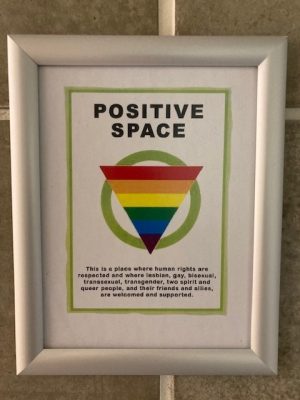 Though there’s still far to go, HHS is making some progress towards LGBTQ+ inclusion. The HHS Office of Human Rights and Inclusion has formed committees like the LGBTQ+ Task Force and the Gender Inclusive Committee to engage our communities and work towards improving processes through training, education, community consultations, policy development, and systems change. These committees have also partnered with local LGBTQ+ communities, advocates, and providers to improve how we deliver inclusive and respectful LGBTQ+ healthcare services, and remove barriers to accessing high quality healthcare for the Hamilton community. Everyone has a right to access equitable healthcare, and the Gender Inclusion Committee and LGBTQ+ Task Force are working to make this a reality for the communities we serve.
Though there’s still far to go, HHS is making some progress towards LGBTQ+ inclusion. The HHS Office of Human Rights and Inclusion has formed committees like the LGBTQ+ Task Force and the Gender Inclusive Committee to engage our communities and work towards improving processes through training, education, community consultations, policy development, and systems change. These committees have also partnered with local LGBTQ+ communities, advocates, and providers to improve how we deliver inclusive and respectful LGBTQ+ healthcare services, and remove barriers to accessing high quality healthcare for the Hamilton community. Everyone has a right to access equitable healthcare, and the Gender Inclusion Committee and LGBTQ+ Task Force are working to make this a reality for the communities we serve.
As an organization:
- We have launched a Gender Identity and Gender Expression Policy.
- We have created 76 designated, single-user, All-Genders washrooms across HHS’ many sites.
- We have launched trans-affirming washroom signage at several of our sites. Installation will be completed at all sites as limitations due to COVID precautions are lifted.
- We have re-vamped our “LGBTQ+ Positive Space Training,” re-branded it to “Two-Spirit and LGBTQIA+ Positive Space Training” and added a de-colonial lens to it. We continue to give folks ribbons and pins upon completion to support them in demonstrating their commitment and Allyship with Two-Spirit and LGBTQIA+ communities.
We continue to work towards:
- The use of gender neutral language in communication (policies, documents, advertising, conversation, etc.)
- Inclusive forms that allow people to self-identify their gender identity, name in use, and pronouns (not just as male or female)
- Signage affirming the Two-Spirit and LGBTQIA+ communities
- Magazines, pamphlets and other resources readily available to members of marginalized communities
- Ribbons or pins worn by trained Allies that people can identify and trust to engage in conversation with and get support
- Guidelines for: Employees Transitioning in the Workplace, Leaders Supporting Transitioning Employees, and Interactions with Trans, Gender-Diverse, and 2-Spirit Patients
- Educated, respectful Allies in our community
Trans Health Resources:
- HHS Two-Spirit and LGBTQIA+ Positive Space Training
- HHS Ally in Action Program
- Hamilton Trans Health Coalition
- Sherbourne Health Centre Guidelines & Protocols for Trans Care
- Trans Community Health Clinic
- Rainbow Health Ontario
- Ontario Human Rights Commission’s Policy on preventing discrimination because of gender identity and gender expression
- Mapping the Void: Two-Spirit and LGBTQ+ Experiences in Hamilton
- TransPULSE report – Health and Wellbeing among racialized trans and non-binary people in Canada
- An introduction to the health of Two-Spirit People: Historical
- Government of Canada resource– Making letters and emails gender-inclusive contemporary and emergent issues

